

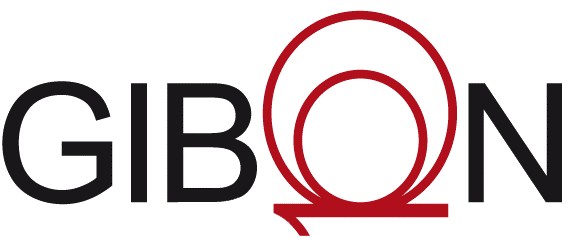
WELCOME
TO THE EUROPEAN
PROJECT GIBON WEB SITE
TO THE EUROPEAN
PROJECT GIBON WEB SITE


A comprehensive simulation model has been implemented in order to investigate the transmission performance of the intended transmitter (based on an electro-absorption modulation laser, EML) and photo receiver (based on standard and travelling wave topologies), both for direct and optically pre-amplified receiver. Effects include:
- EMLís frequency response, absorption curve and frequency chirp
- Expected 100 Gbit/s integrated driver response
- Dispersion, dispersion slope, PMD and non-linear effects in fibres
- Optically pre-amplified receiver, including noise, saturation and dynamic gain
- Photo detector (PD) response based on module measurements
- Forward-error correction (7%) emulation
Simulated results compare with reasonable accuracy to measurements, so the model is believed to offer a high confidence level in the predictions
- EMLís frequency response, absorption curve and frequency chirp
- Expected 100 Gbit/s integrated driver response
- Dispersion, dispersion slope, PMD and non-linear effects in fibres
- Optically pre-amplified receiver, including noise, saturation and dynamic gain
- Photo detector (PD) response based on module measurements
- Forward-error correction (7%) emulation
Simulated results compare with reasonable accuracy to measurements, so the model is believed to offer a high confidence level in the predictions
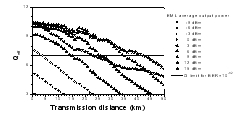
Expected compensated transmission and direct receiver for 100 (left) and FECíed 107 Gbit/s (right). Line shows 10-12 BER limit
Expected uncompensated SMF transmission for 100 (left) and FECíed 107 Gbit/s (right). Line shows 10-12 BER limit
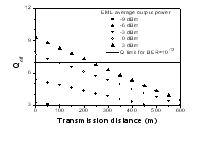
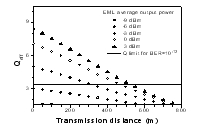
WP1 Specifications and Test (lead partner: DTU/COM)
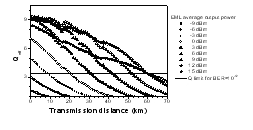
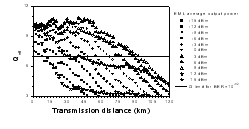
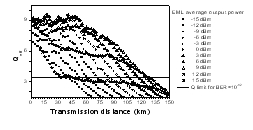
Expected compensated transmission and optically pre-amplified receiver for 100 (left) and FECíed 107 Gbit/s (right). Line shows 10-12 BER limit
- Based on the simulations a set of tentative specifications has been proposed depending on the intended transmission systems, e.g. compensated, uncompensated, w/ and w/o optical amplification
- Implementation of a 100 Gbit/s test-bed
- MUX-EML based transmitter
- PD-DEMUX based receiver
- Optical clock co-propagated with modulated data
- Clock recovery scheme for BER measurements at receiver
- Implementation of a 100 Gbit/s test-bed
- MUX-EML based transmitter
- PD-DEMUX based receiver
- Optical clock co-propagated with modulated data
- Clock recovery scheme for BER measurements at receiver
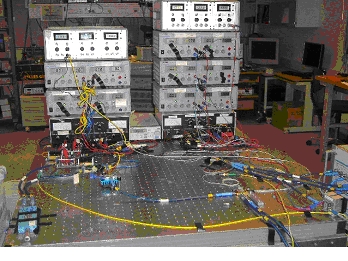
Clock recovery scheme and PD-DEMUX set-up
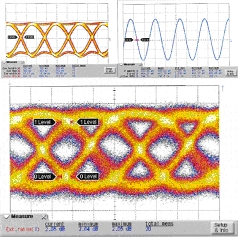
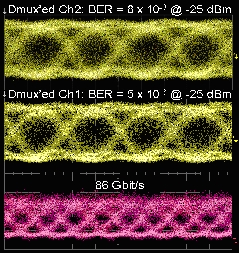
MUX-EML 86 Gbit/s modulated data output
86 and 43 Gbit/s demultiplexed channels after 170 km SMF transmission